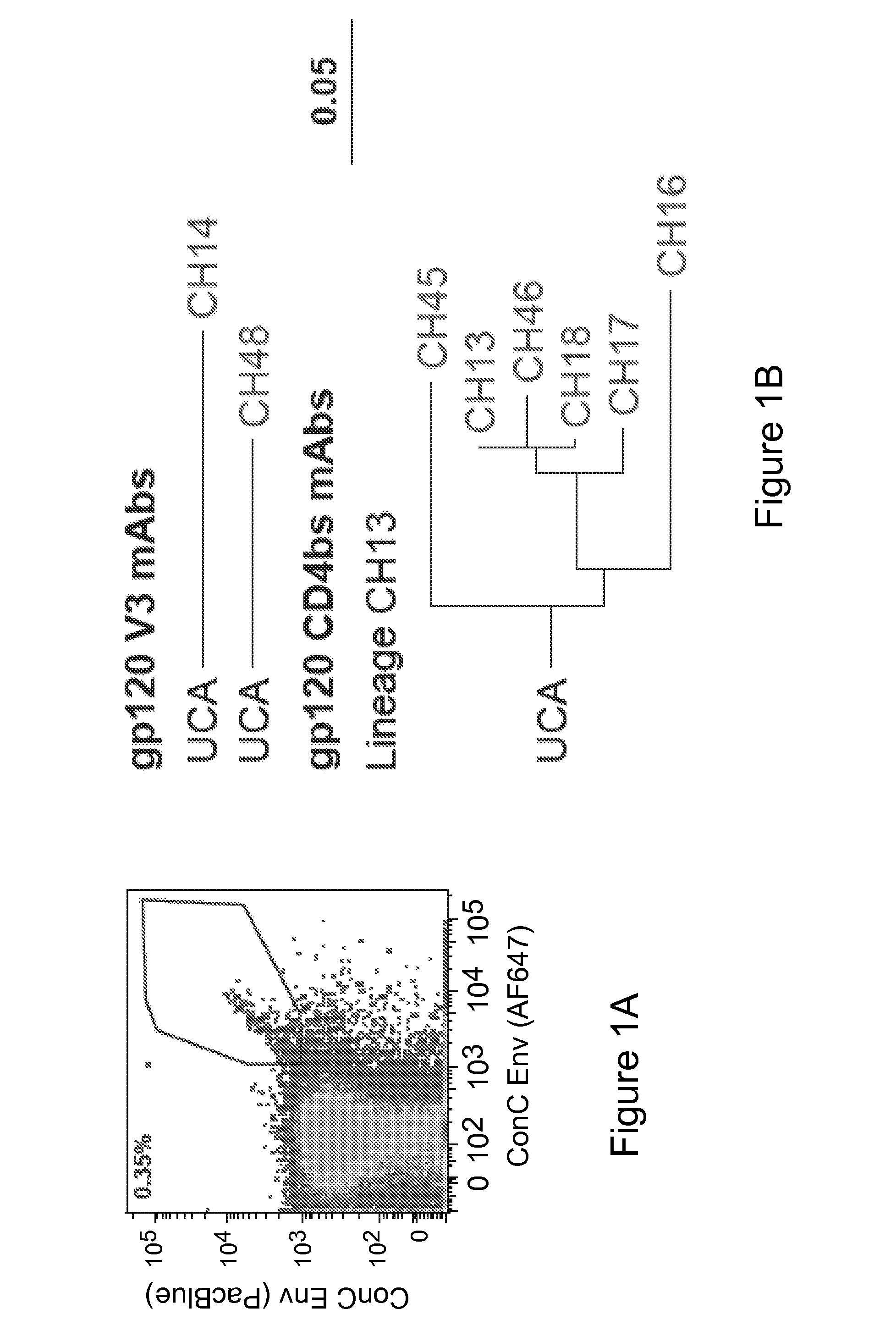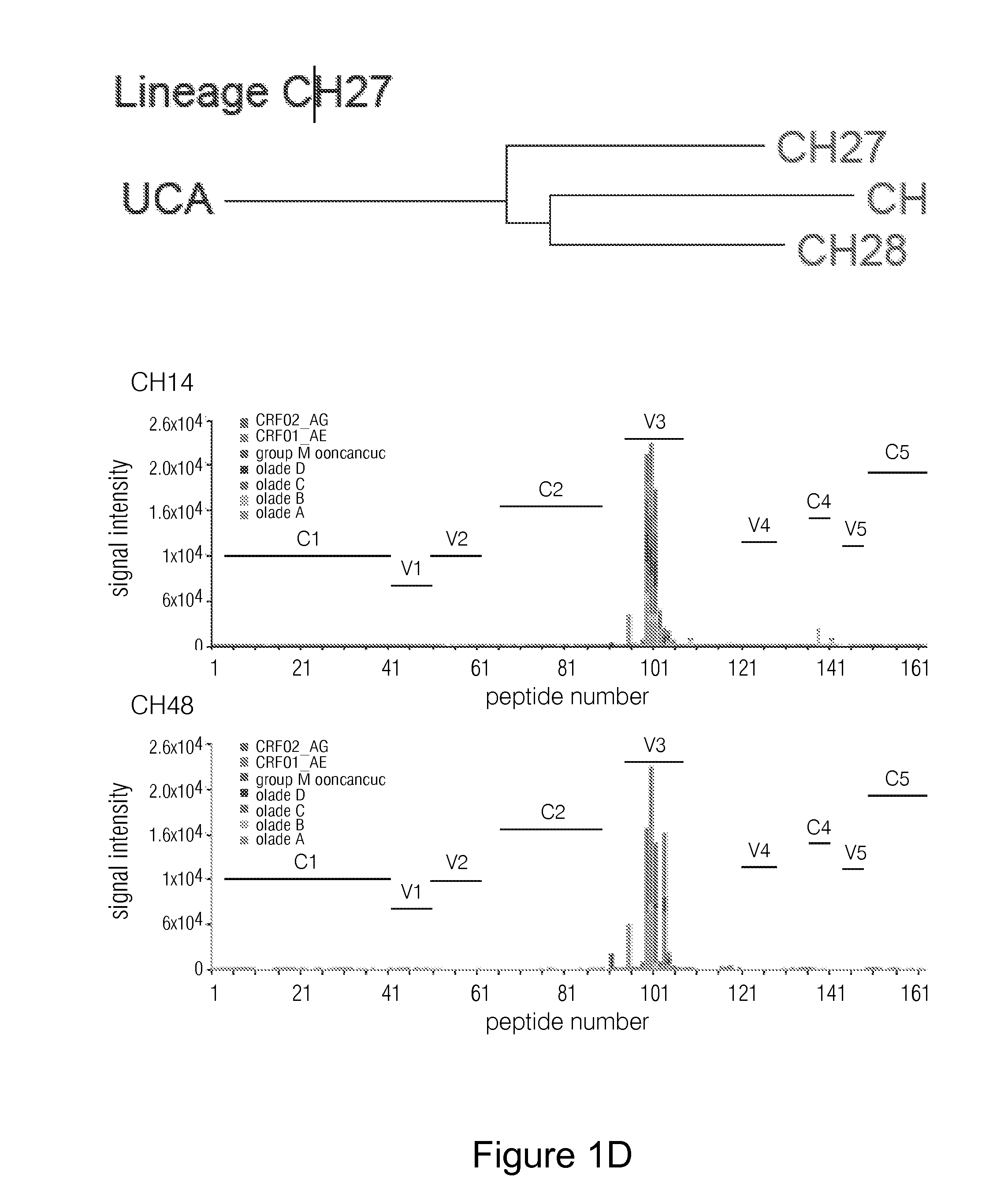Human monoclonal antibodies
a monoclonal antibody and human antibody technology, applied in the field of hiv1reactive antibodies, can solve the problems that the bnab alone in most individuals with established infections cannot prevent disease, and the hiv-1 env tier 1 neutralizing antibodies cannot prevent hiv-1 transmission by virion neutralization
- Summary
- Abstract
- Description
- Claims
- Application Information
AI Technical Summary
Benefits of technology
Problems solved by technology
Method used
Image
Examples
example 1
HIV Neutralizing Antibodies without Heterologous Breadth can Potently Neutralize Autologous Viruses
[0047]Broadly neutralizing antibodies (bnAbs) against HIV-1 have activity in vitro against difficult-to-neutralize (tier 2) viruses while antibodies that arise following vaccination or early in HIV-1 infection have activity only against easy-to-neutralize (tier 1) viruses. The capacity for antibodies that neutralize only heterologous tier 1 viruses to exert selection pressure on HIV-1 is not known. To study this question, we isolated tier 1 virus-nAbs that bind to the third variable loop (V3) or the CD4 binding site (CD4bs) from two HIV-1-infected individuals and determined the antibody sensitivity of autologous HIV-1 strains sampled over time. We found functional autologous viruses could be neutralized by these V3 and CD4bs antibodies, and found that resistant forms of HIV-1 accumulated over time, suggesting Ab-mediated viral selection pressure. One clinical setting where transfer of ...
example 2
ADCC
[0200]HIV-1 reporter viruses used in ADCC assays were replication-competent infectious molecular clones (IMC) designed to encode the viruses listed in the left column of the Table in FIG. 16, for e.g. SF162.LS (accession number EU123924) or the transmitted / founder WITO.c (accession number JN944948) subtype B env genes in cis within an isogenic backbone that also expresses the Renilla luciferase reporter gene and preserves all viral orfs. The Env-IMC-LucR viruses used were NL-LucR.T2A-SF162.ecto (IMCSF162) and NL-LucR.T2A-WITO.ecto (IMCWITO) (T. G. Edmonds et al., Virology 408, 1 (Dec. 5, 2010)). IMCs were titrated in order to achieve maximum expression within 72 hours post-infection by detection of Luciferase activity and intra-cellular p24 expression. We infected CEM.NKRCCR5 cells (NIH AIDS Research and Reference Reagent Repository) with IMCSF162 and IMCWITO by incubation with the appropriate TCID50 / cell dose of IMC for 0.5 hour at 37° C. and 5% CO2 in presence of DEAE-Dextran ...
PUM
| Property | Measurement | Unit |
|---|---|---|
| optical density | aaaaa | aaaaa |
| optical density | aaaaa | aaaaa |
| concentrations | aaaaa | aaaaa |
Abstract
Description
Claims
Application Information
 Login to View More
Login to View More - R&D
- Intellectual Property
- Life Sciences
- Materials
- Tech Scout
- Unparalleled Data Quality
- Higher Quality Content
- 60% Fewer Hallucinations
Browse by: Latest US Patents, China's latest patents, Technical Efficacy Thesaurus, Application Domain, Technology Topic, Popular Technical Reports.
© 2025 PatSnap. All rights reserved.Legal|Privacy policy|Modern Slavery Act Transparency Statement|Sitemap|About US| Contact US: help@patsnap.com



